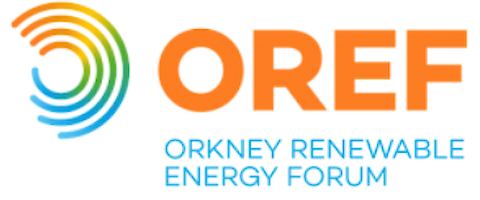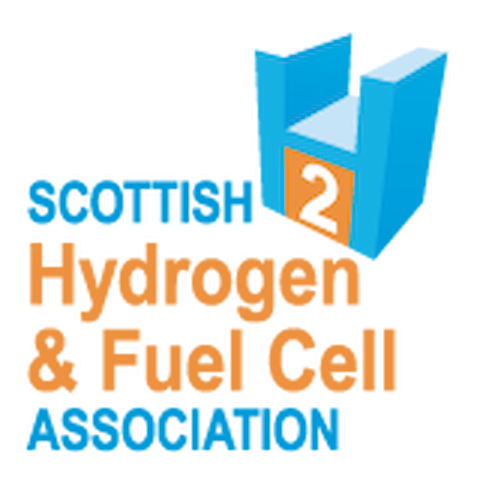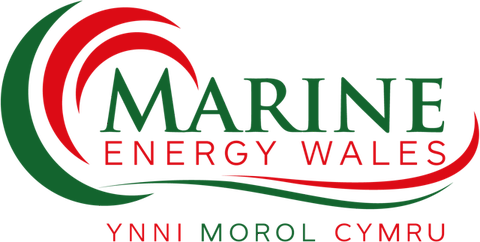Reflections on the Prospects, Opportunities and Pitfalls of Marine Renewables Developments Around Orkney, Caithness and Sutherland
By Gareth Davies, Chair of Orkney Renewable Energy Forum and Managing Director of Aquatera Ltd, Stromness, Orkney, UK.
Introduction
With the recent announcement by the Crown Estate of a leasing round for marine renewables around Orkney, North Caithness and Sutherland early in 2009, the focus upon marine renewables in the local area is set to rapidly increase. Here is a perspective on the needs and prospects for the area faced with these opportunities.
Background
The potential for marine energy production from around Scotland has long been recognised with 'Salter's Duck' being the first concept that people, at least those over 40, are probably aware of. The project which led to the 'duck' concept was started in the early 1970s and was closed down in 1982 by a government committee populated by representatives of the nuclear and fossil fuel industries. Nevertheless Salter's work inspired a number of people to continue to investigate the potential for marine energy generation.
First steps
In 1990 when ICIT was established in Stromness part of the remit of the organisation was to examine the prospects for generating energy form the sea. Over the subsequent years the staff and students at ICIT have undertaken numerous studies into the potential for and pathways to generating energy from the sea. The original ideas for a European Marine Energy Centre (EMEC) type test centre came from ICIT. Graduates and ex staff members from ICIT are liberally sprinkled through the renewables sector and the ongoing work of ICIT, particularly through its MRETS research programme, is keeping it at the forefront of academic research across a number of marine renewables areas.
Coupled with this academic success there has also been tremendous commercial success, which again is often linked to ICIT. Companies such as Aquatera, Scotrenewables, Sula Diving and Xodus Aurora have all been established by ex-staff and students of ICIT.
The selection of Orkney as the preferred location for the EMEC was in part sealed by the presence of these organisations and the recognition of the critical role that they could play alongside EMEC in the development of the marine renewables sector.
Maturing sector in Orkney
The vision that led to Orkney being chosen as a world leading base for marine renewables has been rewarded very well over the last few years, with EMEC and the local businesses involved in the sector, all growing in experience and stature as marine renewables have started to take shape. This success has spread well beyond the initial ICIT spin-offs to include companies such as Bryan Rendall Electrical, Orkney Towage, Currie Brothers, Orkney Aggregates, Heddle's, Roving Eye Enterprises, Leask Diving Services and numerous others who have played important roles in getting the marine renewables industry started.
It is therefore already true to say that Orkney has a heritage in the marine renewables sector. Given the serious technical, political, financial, and planning issues ahead this pedigree is likely to be very important not only around Orkney but elsewhere in Scotland and beyond.
Orkney initiatives
Over the last 8 years or so key parts of the wider Orkney community has also worked hard to investigate and understand the potential that marine renewables hold. OREF, OIC and HIE Orkney have all promoted Orkney's resources, in terms of energy, facilities and people, with regards to developing that potential.
Although the Orkney brand has always been at the forefront of efforts by Orcadians to promote marine renewables it has not been the exclusive aim. Orkney has always recognised that for the industry to be successful it will need far greater and more diverse resources, facilities and skills than Orkney could ever hope to offer on its own.
In that regard Orkney has always been keen to engage with expertise from elsewhere to create partnerships and teams that can provide collective integrated support to this new industrial sector.
Orkney has also been very willing to export and exchange knowhow, to help other parts of Scotland and indeed the rest of the world fulfil their own ambitions with regards to marine renewables. One hope being that as these other areas develop there is an enduring link back to Orkney that can serve the best interests of both parties.
A key part of much of this activity and support provided by Orkney is that it has been provided on a voluntary basis and whilst the rest of the world was waking up to the marine agenda that has been set by Orkney, this was a viable, though not sustainable way of operating. However, now, as the prospects for marine renewables move from being speculation towards delivery there is an urgent need for Orkney to re-appraise how it promotes itself, what it aspires to achieve, what partnerships it seeks and above all what resources, in terms of time and money, it is going to commit to maintain its stake in the future.
Caithness initiatives
Similar decisions are being considered in nearby communities. Recently the future regeneration issues associated with Caithness have inspired the 'Pentland Firth Tidal Energy Project'. This project has illustrated the great benefits that a community can gain by actively promoting itself, with significant monetary resources, in a new market place.
By encouraging business people and politicians north to see what Caithness has to offer and by offering financial incentives for people willing to invest locally, Caithness has increased its profile and its momentum towards becoming a centre for marine renewables in its own right.
The initiative to set-up a project to realise this potential and to help offset the future economic consequences of the decommissioning of Dounreay should be applauded and learned from.
Wider initiatives needed
There, for example, many other aspects of possible renewables developments and wider economic sustainability in Orkney, Caithness and adjoining areas that must also receive equal focus and attention. Some of these may indeed be more urgent and critical than the consequences arising from the future completion of Dounreay decommissioning. These include:
- The security, prosperity and future growth of existing jobs across the renewables sector.
- The prospects for wave energy and offshore wind production off Orkney, Caithness and Sutherland, alongside those for tide.
- The strategic needs of the renewables industry from Shetland to the Western Isles, including the Pentland area for grid, port and other infrastructure.
- The prospects for the existing oil terminals on Flotta and Sullom Voe - for example possible co-generation of electricity by gas delivered by ship of pipeline and/or industrial scale production of hydrogen from renewables.
- The synergies between and management needed to optimise all economic development opportunities for the region.
In addressing local regeneration and other priorities listed above it would also be wise to ensure that the activities of all participants are co-ordinated to avoid duplication, gaps, and ensure that the most appropriate resources are used for particular roles and activities.
A key starting point is therefore to identify who is willing and able to contribute to these broad strategic requirements and to organise responsibilities accordingly. The key parties that could be involved include:
- Local authorities and local host communities
- Local businesses
- Major industrial sites
- Key industrial sectors (wave, tide and wind, oil & gas, nuclear, shipping, fishing, tourism)
- Investors (local and inward)
- HIE
- Regulators (FRS, SNH, SEPA, HS, Orkney Harbours)
- Crown Estate
- National government
The forthcoming leasing round for wave, tidal and near shore wind energy provides an unparalleled opportunity for all communities around the Pentland Firth and adjacent waters to engage with and even lead the future direction of economic prosperity in the region.
Orkney, Caithness and Sutherland need to identify what the marine renewables industry will need, discuss how it can best be provided, and go about putting the various building blocks in place. Where capital exists, communities and individuals need to consider carefully the risks and the benefits that could come from becoming active participants and investors in the process.
The community can also help very significantly by sharing knowledge and understanding of the local area with new comers and those whose heritage is not connected with the sea. The fishermen, seafarers, lighthouse keepers, divers, boatmen and others who have lived on or beside the sea have invaluable insights and experience. These will save the sector time, money and most importantly lives.
The reality is already plainly seen from the activities to date in Orkney. Whilst marine renewables offers great opportunities and prospects it is incredibly difficult at the start and established engineering and maritime theory is often found wanting.
It will be critical to the success of the industry that the right decisions are made not only about technology design itself but about where these technologies are placed, the support vessels used, locations and scale of harbours, maintenance and manufacturing bases, routes for grid connections to shore and the capacity of transmission to markets.
The way forward
It is easy for Orkney to look across the Firth and see the millions that are being spent on the decommissioning of Dounreay and its associated economic diversification programmes with some envy. The reality is that Orkney does have some funding already available to it in the shape of the strategic reserve fund, also known as the 3p oil fund. The difference is that for 10-20 years Orkney has had the luxury of not needing to use that fund because things were ticking along reasonably well and there were no particular opportunities drifting by.
The situation has now changed.
Fate and concerted effort has dictated that Orkney's abundant marine resources are now the subject of global attention and the time to scale up capacity to exploit these opportunities for economic diversification has arrived. The credit crunch also means that usable capital is a much more valuable asset now than it was 6 months ago. The money held by Orkney for a rainy day, now needs to be spent – it's raining!
As with any investment there are risks, but as recent experience has shown there are very few if any safe places for money today. OREF along with others in the community have consistently called for Orkney Islands Council to release more of the capital held in the reserve fund so that instead of relying on the return dictated by the stock market or bonds the community can reap a reward from the local economy in terms of jobs, local spending in shops, increasing population, more young people choosing to stay or settle here and higher average wage levels.
If the UK and Scottish government targets for marine renewables are going to be met there is around £2-3 billion going to be spent in the vicinity of Orkney and Caithness in the next 12 years. That is an unprecedented opportunity. Orkney has worked extremely hard in so many different ways to reach this point with a leading position in the marine renewables sector. It now has to find ways of maintaining that leading role in the face of increasing competition at home and abroad.










